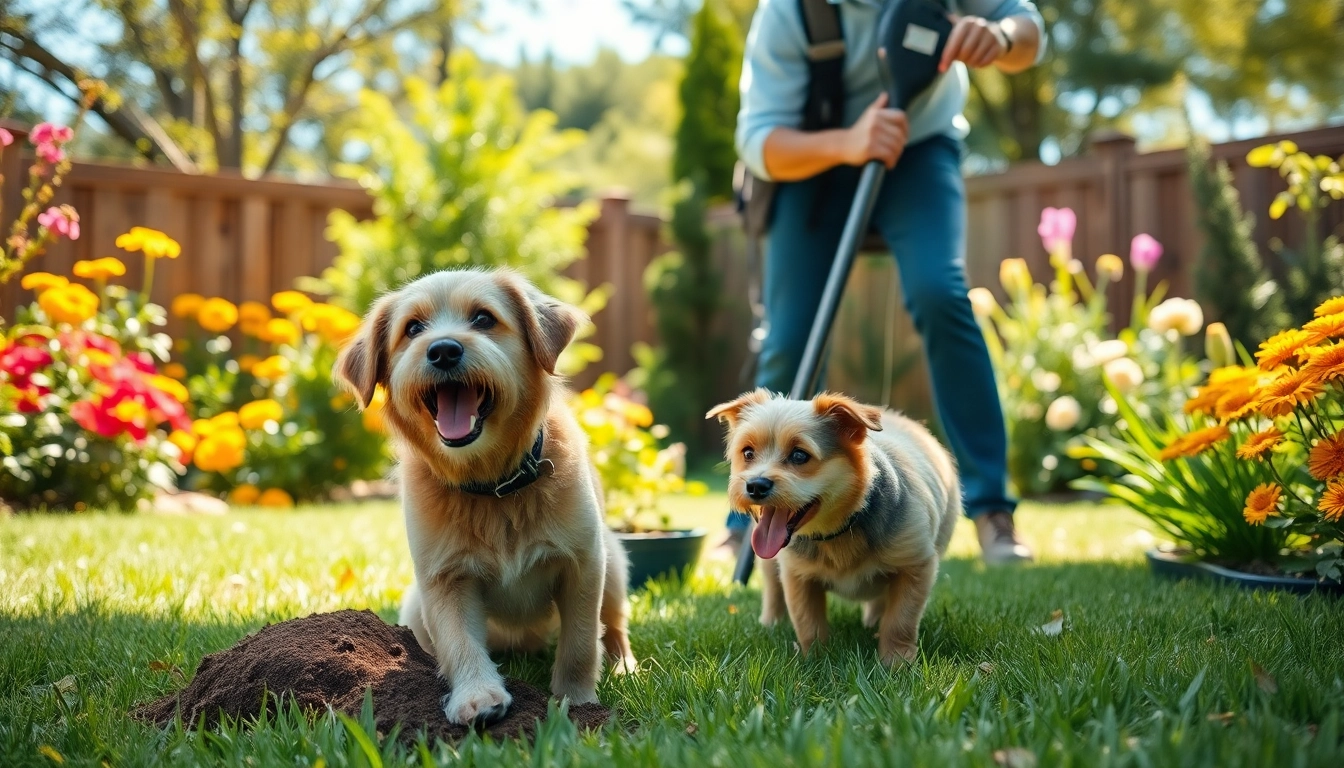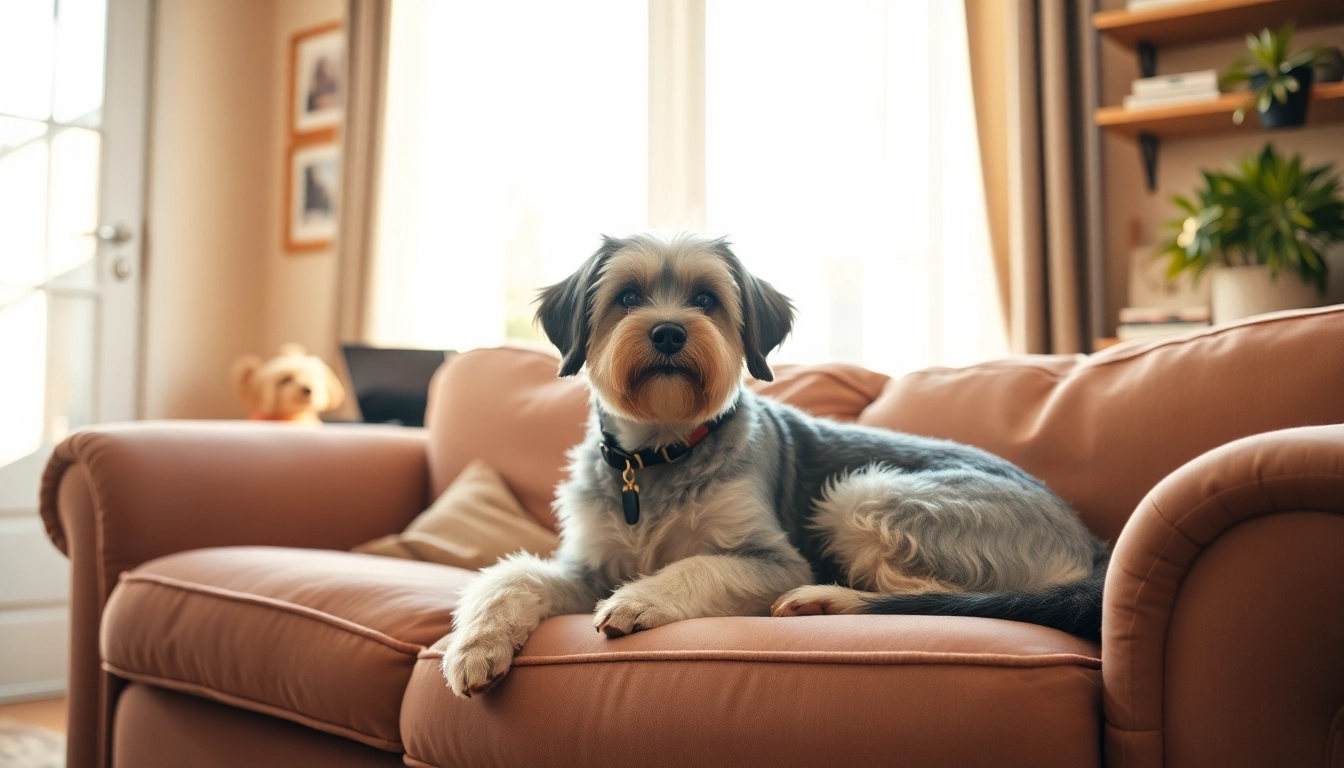Understanding Weekly Dog Poop Scooping
Owning a dog comes with many joys, but one of the less glamorous aspects is dealing with their waste. Regular maintenance, such as weekly dog poop scooping, not only keeps your yard clean but also promotes hygiene and a pleasant environment for everyone. This article delves into the essential topics surrounding weekly dog poop scooping, including what it entails, its benefits, factors influencing frequency, and how to choose a cleaning service that meets your needs.
What is Weekly Dog Poop Scooping?
Weekly dog poop scooping refers to the scheduled removal of dog waste from your yard at least once a week. This service can be offered by professional pooper scooper companies or can be done by pet owners themselves. It typically involves technicians equipped with the right tools to collect and dispose of dog feces safely and hygienically. Regularly scheduled scooping helps maintain a clean and safe outdoor space for play and relaxation.
Benefits of Regular Poop Scooping
The benefits of weekly dog poop scooping are manifold, affecting not only the pet owner but also the community at large. Here are some key advantages:
- Health and Hygiene: Dog waste can harbor harmful bacteria and parasites that pose risks to both humans and other pets. Regular scooping minimizes these risks.
- Odor Control: Removing waste regularly helps prevent unpleasant odors from accumulating in your yard, making it a more inviting space.
- Aesthetic Appeal: A clean yard is visually appealing. It enhances your home’s curb appeal and makes outdoor activities more enjoyable.
- Prevention of Lawn Damage: Dog waste can damage your grass, creating brown patches. Regular scooping helps maintain the health of your lawn.
- Environmental Responsibility: Properly handling and disposing of dog waste reduces its environmental impact, contributing to a cleaner community.
Factors Affecting Poop Scooping Frequency
Several factors can influence how often you need to scoop your dog’s waste. Understanding these can help you determine an appropriate frequency for your yard.
- Number of Dogs: More dogs mean more waste, which can necessitate more frequent scooping.
- Size of Your Yard: The larger your yard, the longer it may take to properly clean. Larger spaces may require more regular scooping to maintain cleanliness.
- Dog Diet: Dogs on high-fiber diets tend to produce larger stools. This may require more frequent cleaning to manage waste effectively.
- Weather Conditions: Wet or windy conditions can affect the cleanliness of your yard and may necessitate more frequent scooping to keep odors and mess at bay.
Choosing the Right Pooper Scooper Service
When it comes to professional pooper scooper services, there are numerous options available. Deciding on the right one can make a big difference in your experience.
What to Look for in a Service Provider
Not all pooper scooper services are created equal. Here are some features and factors to consider when selecting a service provider:
- Experience and Reputation: Look for companies with a solid track record and positive reviews. Established businesses are likely to have better practice standards.
- Service Options: Consider companies that offer flexible service schedules, including one-time cleanups, weekly, or bi-weekly options. Customization is key.
- Insurance and Safety Protocols: Verify that the company is insured and follows safety and hygiene standards to protect both clients and employees.
- Environmental Recommendations: Some companies offer eco-friendly waste disposal methods. If environmental impact is important to you, check if this is part of their service.
Comparing Local Options
Doing a market comparison can help you pinpoint the best local option for your pooper scooping needs. Start by compiling a list of local companies, comparing their services, rates, and customer feedback. Here’s how to approach this process:
- Research online directories or local listings.
- Ask friends or family for recommendations; word-of-mouth can be invaluable.
- Read customer reviews and testimonials to understand the reputation of each service.
- Contact each service provider for clarifications about their offerings and rates.
Cost Breakdown for Weekly Services
The cost of weekly dog poop scooping services can vary considerably based on several factors. On average, you might expect to pay anywhere between $10 to $50 per week. Here are some factors that can impact the pricing:
- Frequency of Service: Weekly services tend to be less expensive than more frequent cleanings.
- Yard Size: Larger yards generally incur higher costs due to increased labor and time requirements.
- Number of Dogs: Services may charge per dog, so having multiple pets can raise your total price.
- Special Offers: Some companies might have promotions or package deals that can help reduce costs.
Preparing Your Yard for Weekly Scooping
Before your pooper scooper service arrives, taking a few steps can enhance the efficacy of the service and contribute to a smoother experience.
Outdoor Safety and Cleanliness
Making sure your yard is ready for the service can not only improve cleaning efficiency but also maintain safety. Here are some tips:
- Clear Obstacles: Remove any toys, furniture, or debris that could hinder the scooping process.
- Secure Your Dog: Keep your dog in a secure area during the service to ensure the technician can work without interruptions.
- Remove Hazards: Look for any potential hazards like sharp objects that could pose a risk during cleaning.
Encouraging Your Dog to Use Designated Areas
If possible, train your dog to use a specific area of your yard for elimination. This can make weekly scooping much more efficient. Strategies may include:
- Routine walks to help them establish a pattern.
- Positive reinforcement when they use the designated area.
- Consistent commands that help them associate specific spots for bathroom breaks.
Tools and Supplies to Help
While hiring a professional service can handle the bulk of your scooping needs, being equipped with the right tools is also beneficial.
- Comfortable Scooping Tools: Consider investing in a long-handled scooper or heavy-duty bags for easier DIY cleanup when needed.
- Odor Control Products: Use specific products for stagnation and smell management if you have a persistent odor in your yard.
- Waste Disposal Solutions: Invest in a pet waste disposal system that can help manage waste beyond your scooping services.
Maximizing Your Investment in Scooping Services
After choosing the right pooper scooper service, know how to maximize the value you receive for your investment.
Combining Services for Maximum Value
Many pooper scooper services also offer complementary services such as dog walking or pet sitting. Combining these services can often lead to discounts and added convenience. Here’s how to navigate this:
- Ask about bundling options on services.
- Inquire if referrals or previous customers can guarantee additional discounts on future services.
- Evaluate the potential of daily walks when combined with poop scooping to ensure waste is collected promptly.
Scheduling Considerations
While weekly scooping is beneficial, coordinating your schedule with the service can enhance your experience. Here are some scheduling tips:
- Establish a regular day and time that works for your family.
- Be sure to communicate any special events that might affect service scheduling.
- Fill out any necessary paperwork ahead of time to ensure smooth operations.
Tips for Maintaining a Clean Yard
Consistency in maintenance will keep your yard looking great and enhance the overall quality of your service. These tips can help:
- Perform quick daily checks to ensure waste is being handled effectively.
- Encourage family members and children to observe and report when waste accumulation occurs.
- Consider routine landscaping practices that deter waste build-up and maintain the yard’s overall cleanliness.
The Environmental Impact of Dog Waste
Understanding the effects of dog waste on the environment is critical. By committing to effective waste management practices, you can significantly reduce your ecological footprint.
Why Proper Disposal Matters
Dog waste, if left unaddressed, contributes to environmental degradation. Here’s why proper disposal is vital:
- Water Pollution: Waste left on the ground can wash into water systems, harming wildlife and contaminating drinking water.
- Soil Health: Accumulation of waste can negatively impact soil health, affecting plant growth and overall landscape health.
- Public Health Risks: Unattended waste can carry parasites and bacteria, posing risks to both pets and humans.
Alternatives to Traditional Poop Disposal
With advancements in pet waste technology, there are more environmentally friendly alternatives available:
- Poo Bags: Opt for biodegradable poop bags to lessen impact on landfills.
- Composting Options: Some companies offer composting services for dog waste, creating sustainable fertilizer instead of landfill waste.
- Waste Digester Systems: These systems break down waste on-site and use microbial action to eliminate odors and health hazards.
Contributing to a Greener Community
As a responsible pet owner, adopting a proactive approach to waste management not only helps your yard but also contributes to a healthier community. By setting a standard for responsible waste disposal, you encourage others to follow suit:
- Participate in community clean-up initiatives focused on pet waste.
- Share tips and recommendations on effective waste management with fellow dog owners.
- Advocate for local ordinances that support responsible pet ownership and waste management.


